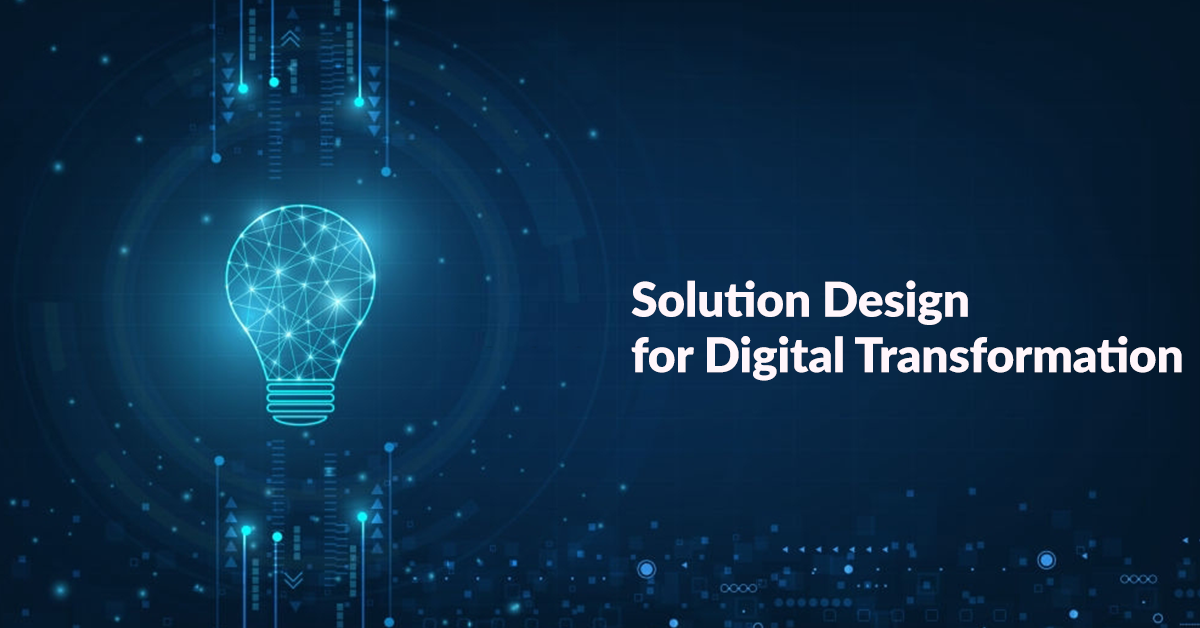Blog on RFID Technology and IoT Solutions
Blog Home
Solution Design for Digital Transformation – Common mistakes to avoid
03 February 2022By Anuraag Bhatnagar
First comes Strategy, followed by Solution design.
The Foundation of any digital transformation project is a well-thought Solution design. A good solution design makes an enormous impact on achieving business transformation objectives. Transformation execution becomes that much easier on the back of well thought through and professional Solution design. Best Solutions have a positive impact across organizational boundaries. At Intellistride we have created 100s of solution designs for various industries. There are some common mistakes that we see as we go through the process with our customers. Understanding these pitfalls early save efforts in long run.
Digital transformation “is greater than” Technology change: Digital Transformation is more than a technology introduction. Technology is an enabler for creating efficiencies in processes. These impact information flow, decision making and organization design structure. Often, Requestor comes to us with a pre-defined notion of technology to be used. This may not be the best way to achieve the transformation objective. A good Solution is meant to achieve a business objective, no matter which technology is finally used. As solution designers, we focus on objectives and processes and then build a design around it with the right hardware, software, and services components. IoT solution design ends up using a mixture of RFID, Sensors, cameras, and a host of other options with required Software and services.
Design “Wholes” implement “Parts”: Solutions can expand and cover multiple processes in a large operation. We experience customers going for a small part of the process without much thought on the larger picture. It is a good practice to think end to end and design accordingly. This allows you to define interfaces in the process and their related impact on the organization. It is advantageous to design discreet interlinked modules which can be executed in separate phases. A phased implementation allows lesser organizational cognitive load. Learnings from one phase can be used to tweak the design for the next phase.
Early Management buy-in: Management buy-in is essential before the solution design starts. Spending time and effort designing the solution without a management buy resulted in wasted efforts. In our experience, the process that works well is to define the requirement and work with a trusted partner to help define a preliminary solution and budgetary pricing. Detailing does not need to be done at this stage. A quick business case allows you to get a management buy-in before proceeding with detailing.
An experienced solution design team can spend several days & weeks to understand the process and design the solution. There is a danger of lost efforts, credibility, and time if management buy-in is requested once the design is completed and rejected. Early approval also gets you to identify transformation supporters and critics. This can help tighten the requirements. The design team can also take wider inputs from other downstream or upstream process stakeholders.
Iterate, Iterate, Iterate:
Once the Solution design is ready on paper rapid prototyping is essential. “Rapid” is the keyword here. Prototyping helps design teams to go back to the drawing board and make changes, implement the prototype, and check again. A well-known Project management principle is, “Cost of errors of a project exponentially increases as project progresses”. Prototyping allows a reduction in the cost of error risks. Prototyping Investments are low, but the benefits are immense as it helps identify any bottlenecks which can be used as inputs to further refine the design. It also serves as a confidence builder for management and the team. Post Prototype rapid implementation is essential. A study shows that a large number of transformations have not moved beyond the Prototyping phase. It is time now to get them fast-tracked.
A solution requires effective design thinking capabilities. A team of experts are needed to support the organization to arrive at a design. Nobody knows the Operations and Processes better than the organization itself. However, outside expertise is needed to bring in design thinking and technology familiarity. A well designed with outside and inside knowledge works well.
- Intellistride.com
- Blog
- Solution Design for Digital Transformation – Common mistakes to avoid